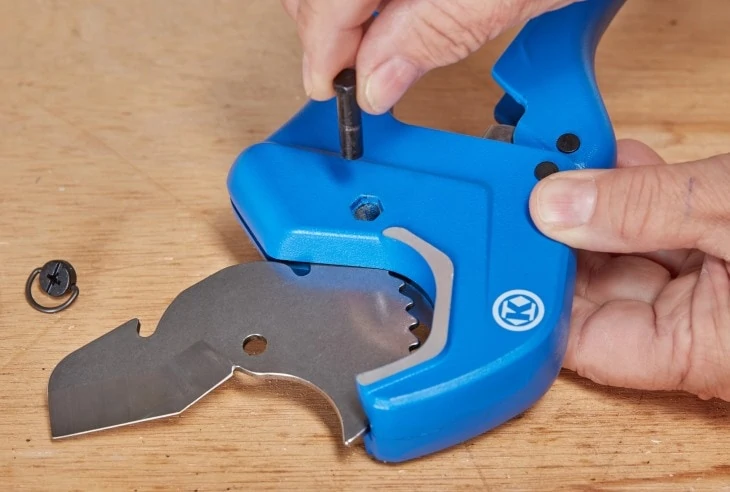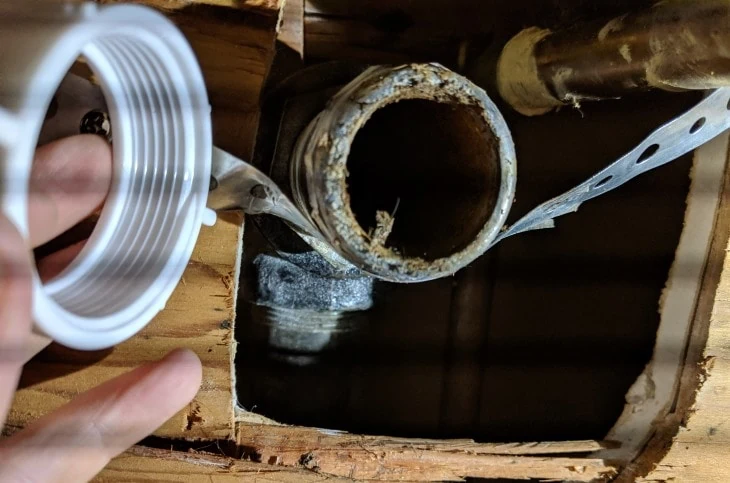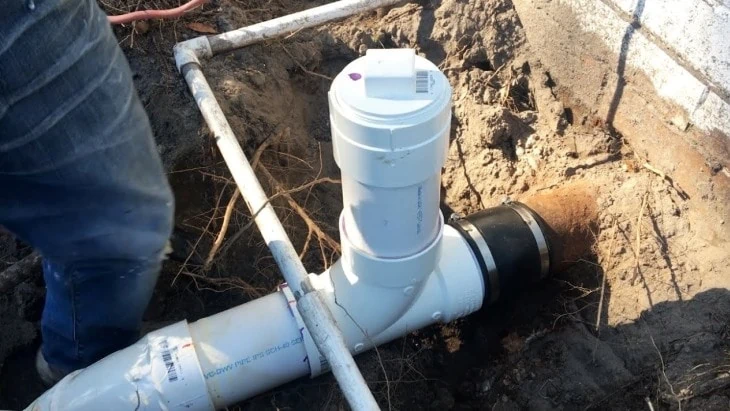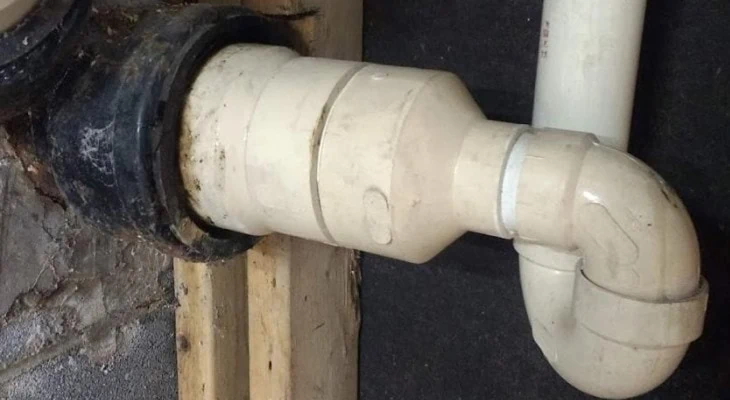Connecting PVC pipes to cast iron pipes involves only a few simple steps. Most of the tools you’ll need might already be in your garage!
Update your house with new PVC and start by removing the existing pipe. Use no-hub connectors to join the PVC and cast iron pipe. Tightly secure the connector with a screwdriver or wrench to avoid any leakage!
Table of Contents
What You’ll Need

Here are the tools you’ll need to complete this project. If you don’t want to buy something outright, you’ll also find most (if not all) of them at your local tool rental.
Required Tools
An important tool you’ll need for this project is a pipe cutter. You can also use a reciprocating saw to cut off the old cast iron pipe.
You’ll also need a no-hub connector that’s engineered for cast iron piping. These will help attach the pipes to PVC.
The last tool you’ll need to finish the job is a Phillips screwdriver or socket wrench. This tool will make sure the bolts are completely secure and will prevent leakage issues.
How to Connect PVC to Cast Iron
Now that you have all the tools you need, let’s get started on the project!
Prepare the Work Space
Before picking up the pipe cutter, make sure to clear the space around the pipe. Any obstructions like insulation or clutter could be a hazard while working.
You’ll also need to turn off the water if you’re working on pipes that connect to the water source.
Remove the Existing Pipe
If you are switching to PVC because of leakage issues, you’ll have to cut off the existing pipe. Pipe cutters are made for this step, but reciprocating saws will get the job done faster.
Also known as a Sawzall, a reciprocating saw is great for cutting through cast iron and PVC.
Connect the Cast Iron Pipe to PVC

Once you cut off the existing pipe, you can work on attaching the PVC. Use the no-hub connector to join the cast iron pipe and PVC pipe.
Make sure you purchase the right size connectors so they can be properly sealed. Connectors that are too large will cause leakage problems.
You can always check with a hardware store or a professional contractor if you have doubts about getting the correct no-hub connectors.
Take your Phillips screwdriver or socket wrench and tighten the bolts to secure the connector. Once the connector is installed, place the PVC pipe all the way into the other side of the connector.
Secure the PVC pipe with your screwdriver or wrench. Double-check that the bolts are tightened completely and your pipes should be properly secured! This process will also work for connecting PVC to cast iron sewage pipes.
How to Avoid Leakage
When connecting new pipes, there’s always a possibility of leakage – especially if you don’t have experience working with piping.
Secure the Connector

When tightening the bolts and securing the no-hub connector, make sure to use the right tool for the job.
Check that your screwdriver or wrench fits properly into the connector. Some wrenches, like a T Wrench, have an indicator that notifies if you’re applying the right amount of pressure.
Applying too much or too little pressure can affect how well the connector is secured. Leaks can be hard to identify, so you’ll want to make sure to tighten the connector properly!
Block Leaks
If you do get unlucky with a small leak in the PVC pipe, you can easily use rubber and silicone repair tape to block further leakage. This solution only works for minor leaks – if there’s a larger dripping issue then you’ll most likely have to replace the whole pipe.
Final Thoughts
Connecting PVC pipe to a cast-iron pipe can be a simple project! Do your research before attempting any of the above steps and take precautions before starting this project.
Once you complete this project, be sure to check for any leakage. You can do this visually by turning the water back on and looking for dripping between the pipes.
Cast iron pipes are more likely found in older homes but can be easily switched over to newer PVC piping. PVC pipes will be more cost-effective in the long run!
Wear protective gloves and goggles when working with pipe cutters or reciprocating saws. If you ever have doubts or concerns about the process, contact a professional contractor for help!

